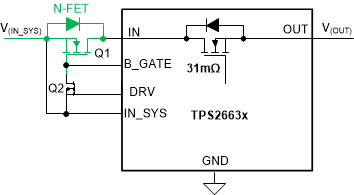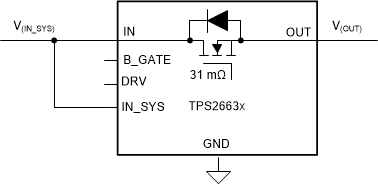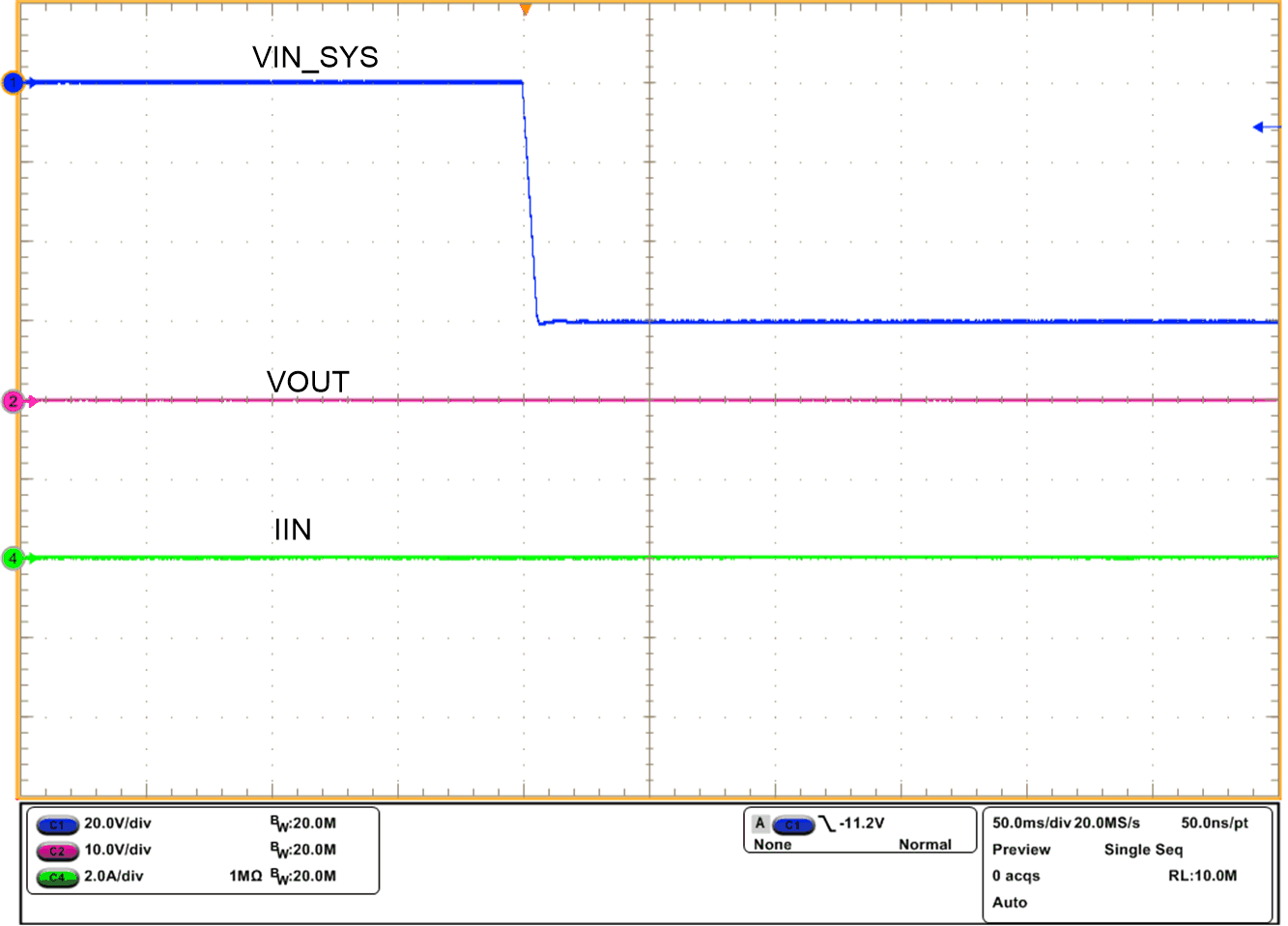SLVSE94G September 2018 – June 2024 TPS2663
PRODUCTION DATA
- 1
- 1 Features
- 2 Applications
- 3 Description
- 4 Device Comparison Table
- 5 Pin Configuration and Functions
- 6 Specifications
- 7 Parameter Measurement Information
-
8 Detailed Description
- 8.1 Overview
- 8.2 Functional Block Diagram
- 8.3
Feature Description
- 8.3.1 Hot Plug-In and Inrush Current Control
- 8.3.2 PGOOD and PGTH
- 8.3.3 Undervoltage Lockout (UVLO)
- 8.3.4 Overvoltage Protection (OVP)
- 8.3.5 Input Reverse Polarity Protection (B_GATE, DRV)
- 8.3.6 Reverse Current Protection
- 8.3.7 Overload and Short-Circuit Protection
- 8.3.8 Output Power Limiting, PLIM (TPS26632, TPS26633, TPS26635, TPS26636, and TPS26637 Only)
- 8.3.9 Current Monitoring Output (IMON)
- 8.3.10 FAULT Response (FLT)
- 8.3.11 IN_SYS, IN, OUT, and GND Pins
- 8.3.12 Thermal Shutdown
- 8.3.13 Low Current Shutdown Control (SHDN)
- 8.4 Device Functional Modes
-
9 Application and Implementation
- 9.1 Application Information
- 9.2
Typical Application: Power Path Protection in a PLC System
- 9.2.1 Design Requirements
- 9.2.2 Detailed Design Procedure
- 9.2.3 Application Curves
- 9.3 System Examples
- 9.4 Dos and Do Nots
- 9.5 Power Supply Recommendations
- 9.6 Layout
- 10Device and Documentation Support
- 11Revision History
- 12Mechanical, Packaging, and Orderable Information
Package Options
Refer to the PDF data sheet for device specific package drawings
Mechanical Data (Package|Pins)
- RGE|24
- PWP|20
Thermal pad, mechanical data (Package|Pins)
Orderable Information
8.3.5 Input Reverse Polarity Protection (B_GATE, DRV)
The TPS2663x devices support the reverse input
polarity protection feature. Connect an N-channel power FET (Q1) with the source to
IN_SYS, drain to IN and GATE to B-GATE as shown in Figure 8-7. This action forms a back to back FET topology in power path that is required to
protect the load from input reverse polarity faults. Connect an external signal FET
(Q2) across BGATE, DRV and IN_SYS. Q2 acts as a pulldown gate switch for Q1. In the
applications where reverse polarity protection and reverse current blocking is not
required then connect IN_SYS and IN together. Leave BGATE and DRV open as shown in
Figure 8-8.
Figure 8-9 illustrates the reverse input polarity protection functionality.
The TPS2663x devices support a maximum differential voltage across V(IN_SYS) – V(OUT) up to –85 V. This high voltage transients generally appear during the IEC61000-4-5 surge testing at the V(IN_SYS). This voltage stress appears across the external N-channel FET. The TPS2663x provides a gate drive (B_GATE) of 10.2 V (typical). The fast pulldown gate switch Q2 pulls down the GATE of the Q1 during reverse current and reverse polarity fault events. Q2 must be at least 15-V, VDS rated FET with a maximum VGS rating of 20 V, Ciss ≤ 50 pF and VGTH(min) ≤ 3 V.


 Figure 8-9 Input Reverse Polarity Response at –60-V Input
Figure 8-9 Input Reverse Polarity Response at –60-V Input